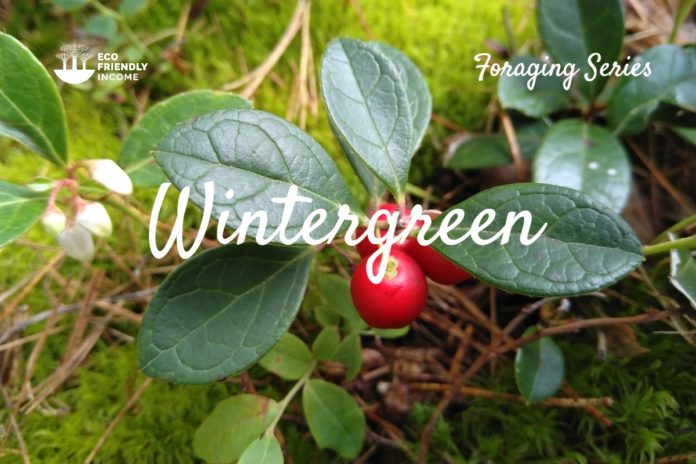A one of a kind herb, luckily, identifying wintergreen (Gaultheria procumbens) isn’t too hard. It has a wonderful aroma that’s easy to recognize and makes delicious, fragrant tea.
You can also extract wintergreen essential oil to make perfume, soap, or even candles. Mmmm.
As a tree planter working in the forest, I’ve had the chance to see wintergreen many times. And I always feel a rush of excitement when I do! I know how rare they can be and how precious it is.
But when you pick this herb, you really need to learn to pick sustainably. If you go out picking all the gaultheria procumbens patches near you, they simply won’t come back.
Unfortunately, they’ve become endangered in parts of my home region, so that gives me one more reason to bring awareness!
Today, I’d like to share my knowledge with you, here’s what I’d like to teach you:
- Wintergreen Picking Season
- How to Identify Wintergreen
- Where You Can Find it
- How to Harvest it Sustainably
- How to Propagate Wintergreen
- How to Store it
Let’s get started!
Wintergreen Picking Season
Wintergreen is an evergreen plant, which means it won’t lose its leaves during winter. This means they can be picked at almost any time of the year.
They do flower during summer and from the flowers, they create edible bright red fruits.
How to Identify Wintergreen (Gaultheria Procumbens)
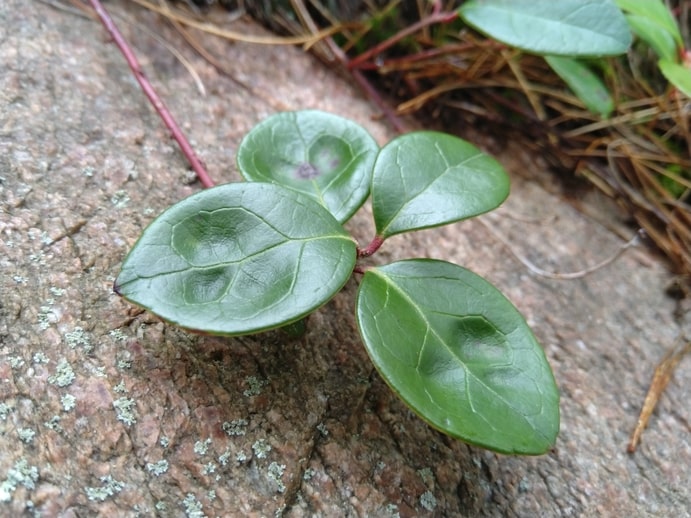
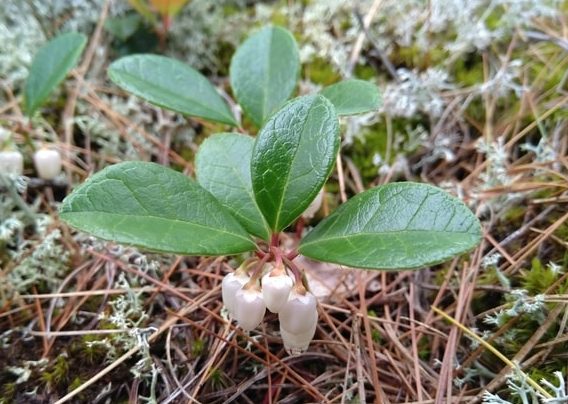
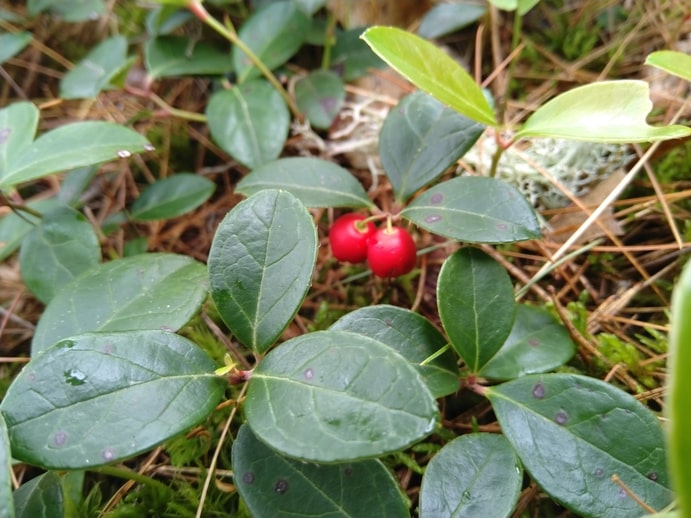
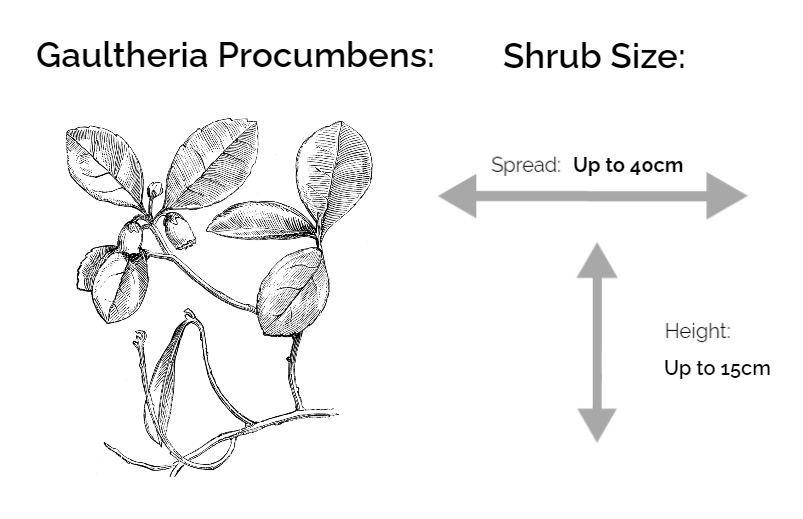
Wintergreen is a low-lying plant that grows spreading across the ground rather than upwards. It’s a small plant with simple, dark green oval-shaped leaves that are thick and have a shiny coating on them. The leaves have widely serrated margins and grow in an alternate arrangement on the stems.
They can spread on the ground up to 40cm wide, spreading by stolon (like a horizontal stem). Most wintergreen plants have 3-4 leaves per stem.
Similar to blueberries, wintergreen blooms white, bell-shaped flowers that point downwards.
Furthermore, their stems and stolons are a pink/magenta color.
Finally, wintergreen smell is particular, to me it has a hint of mint to it. Others I’ve shown it to have told me it also smells of licorice.
Where You Can Find Wintergreen (Gaultheria procumbens)
Wintergreen likes to grow in sandy pine forests. You can often find it growing on rock caps, it’s a companion plant to Jack pine.
It likes to grow in moist acidic soils sometimes along with Labrador tea. Moss and lichens are often growing in the same area as wintergreen.
Gaultheria procumbens is only found naturally on the east coast of North America. From the northern boreal forests of Quebec to as south as Georgia and Alabama.
My favorite spot for picking wintergreen is near the Georgian Bay, it’s a rocky area with large populations of this herb.
I’ve seen gaultheria procumbens grow near the following plants:
- Blueberry (Vaccinium L.)
- Creeping snowberry (Gaultheria hispidula)
- White Pine (Pinus strobus) & Jack Pine (Pinus banksiana)
- Labrador Tea (Rhododendron groenlandicum)
When you see any of these, you might find wintergreen somewhere close, it’s always good to keep it in mind.
How to Harvest Wintergreen (Gaultheria procumbens) Sustainably
Since this plant doesn’t grow very fast, you want to be very thoughtful of each shrub when you pick.
My personal method for picking wintergreen sustainably:
- Pick a plant that has enough neighbors (leave the single plants alone)
- Use a sickle or pinch with your fingers only one leaf per stem
- Move on to the next plant
It’s simple, taking only one leaf will minimally harm the plant, and keep it alive.
Preferably, take the darker green leaves. This year’s growth is a lighter green and won’t pack as good of flavor as older leaves.
Something else I like to do when I see the bright red fruit is toss them on the ground and cover them with a bit of forest litter.
You don’t need to bury them, they need to go through natural stratification. The best way to help them is to cover them with leaf litter, then they’ll have a better chance to germinate next spring.
How to Propagate Wintergreen (Gaultheria procumbens)

Hardiness Zone: 2-7

Soil Type: Well-drained, low nutrient, acidic soil.

Water: Normal. Regular moisture is important.

Exposure: Partial Shade
Wintergreen (Gaultheria procumbens) is an evergreen shrub hardy up to zone 2. A wintergreen shrub should be planted in well-drained, acidic, low nutrient soil. You should water it weekly to make sure it retains moisture, especially when flowering.
Commercial Value
Propagating wintergreen has some merit commercially. Its leaves have a delicious taste and medicinal properties that make it popular as tea.
Additionally, wintergreen essential oil has many uses. From making perfumes to soaps, lip balm, gum, and candles.
Growing and propagating wintergreen can become profitable if done right.
The Best Way to Propagate Wintergreen:
Division
Wintergreen can be propagated easily by division. This is because they naturally spread by stolon (horizontal stems).
Here’s how to do it:
- Find a wild wintergreen patch and identify the largest plant.
- Follow the horizontal stems on the wintergreen, it should lead you to other plants with leaves.
- These other plants are clones, attached to the mother plant, seperate them.
- Make sure the clone has established roots.
- Once you split a clone that has roots, all you need to do is replant it!
Softwood Cuttings
First, when you take softwood cuttings for wintergreen, you wanna cut them about mid-summer when the shrub is actively growing.
Because of their tenderness, softwood cuttings die much faster than hardwood cuttings. Moistures levels are much more important to keep in check when you root cuttings at this stage.
- Take your wintergreen cuttings from stems at 2 inches each with a heel if possible.
- Wound them with a vertical line at the base.
- Water the tips, pat them dry then dip them in rooting hormone.
- Poke holes in your rooting medium.
- Plant them, carefully not to remove the rooting hormones.
- Moisturize your rooting medium regularly.
Recommended rooting medium: Sand with perlite mix.
All in all, wintergreen softwood cuttings are slow to root and generally take 6-8 weeks.
How to Store Freshly Picked Wintergreen Leaves
To retain the top flavor and fragrance, wintergreen leaves need to be dried and stored properly.
First, you want to air dry them. What I do is use a mesh bag when I collect leaves, then when I’m done I hang up the mesh bag.
You don’t want to hang the mesh bag directly in the sun, or it risks breaking apart the inner components and oils of the leaves.
Let them air dry for a week, you’ll see they’ll become bone dry and some leaves will show dense essential oil spots.
Finally, place them in a sealed mason jar, stored away in a cool dark place.
When you feel like a tea, just add 4-5 leaves to a cup and let them steep for 5 mins in hot water. You’ll get to smell and taste the delightful aroma again!

